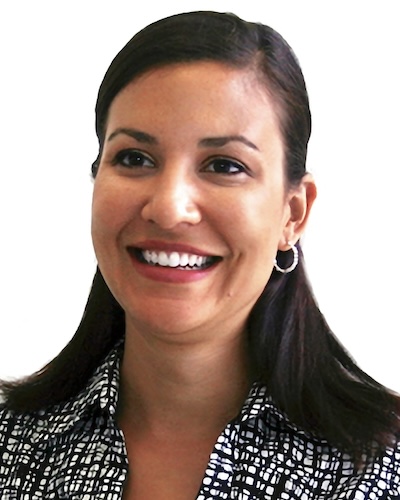Student Blog
Classes

Feeling Like A “Real” OT! ⟩
February 11, 2013, by Amber
Classes What are OS/OT?
This semester I am taking several elective courses, all of which are very exciting because I have chosen to take them based on my interests. They are all very hands-on and full of practical knowledge that I will use every day in practice. The most hands-on of these elective courses is Enhancing Motor Control for Occupation. In this course we are learning how to facilitate the recovery of motor control after an individual has sustained an upper motor neuron lesion, as may happen during a stroke or traumatic brain injury. We learn different theories and techniques, such as Neuro-Developmental Treatment (NDT) and apply them to occupational therapy treatment. Best of all, the instructor is a working practitioner at Rancho Los Amigos National Rehabilitation Center and the class takes place onsite in the inpatient unit.
A requirement of this course is that I observe occupational therapists using motor control during real treatment sessions for two hours per week. One of the first patients I observed was an elderly gentleman with a goofy sense of humor. He had a diagnosis of Alzheimer’s Disease and had recently suffered from a stroke. The occupational therapist completed a visual assessment with the gentleman to confirm that he displayed left-sided inattention. This means that he consistently ignored information on the left side of his visual field. For example, when reading an eye chart he only read the right half of each line. The therapist mentioned that in subsequent sessions he would be working with the man to help him pay attention to his left side.
During the session I spoke with the man’s wife and asked her what sort of things he liked to do before he was limited by his conditions. She mentioned that he was someone who could “fix anything” and that he was an avid golfer. At the end of the session, I related these facts to the occupational therapist and suggested he may use these activities to facilitate attention to the left. He was not previously aware of the man’s interest in golf and thanked me for my input. I saw the gentleman again at his next session. The occupational therapist had found a golf ball and fashioned a club out of a cane turned upside down (a testimony to the creativity of OTs!). The therapist situated a target to the left side of the man, and like a pro he overcame his left inattention to hit the target every time! It was wonderful to feel that I had contributed to a small breakthrough for this man who is struggling to regain the function he had lost. During that session I felt like a “real” OT and it was fantastic! I’m looking forward many more moments like this in the future as I gain confidence in my abilities.
⋯

The Hand You’re Dealt ⟩
January 28, 2013, by Paula
Classes What are OS/OT?
So far this semester, it has been interesting to experience the different teaching styles of the professors in the elective courses. For the most part, this is the first time that the students have had a chance to take classes with these instructors. After being a student for pretty much your entire life, you begin to find certain techniques that work really well for you, and others which do not. I’ve always enjoyed seeing what teaching strategies our instructors bring to the table in order to harness our highest potential and attention. This could be a special challenge with the new schedule of night classes this semester.
In our first few meetings of the Hand Rehabilitation elective, our professor encouraged the class to take a few minutes to think of what occupation would be most impacted if we were to seriously injure our hands. I always have felt that this is an awesome type of exercise to develop skills of empathy. Hearing the variety of occupations my classmates came up with was really interesting and gave an insight to the potential range of importance that can be placed on an activity by the individual. The discussion made me think about the many important activities and moments in my life, past and present, which would be altered if I were to have a serious hand injury. It also made me think of the many ways that hands are used in our lives such as for self expression and in social and family roles (some uses which have been important in my life are pictured below). I had a very hard time settling on something that would make me feel like I “couldn’t” do something — I began to realize that I was set on the fact that whatever would happen, I would work through it as much as was possible and find ways to adapt my occupational involvement so that I could still fit in the aspects of my life which make me feel like myself. The discussion eventually led to a question of resiliency, temperament and feelings of an internal locus of control (don’t you love when all of your coursework relates and you can create these cool webs of knowledge? ;]). What would I do if I had an injury keeping me out of my sports of swimming and water polo? It isn’t always about adapting the environment or introducing a device to assist function. Sometimes it is more about adjusting the goals and the attitudes associated with the barriers imposed on the individual. All of this was running through my mind when I realized we were starting in on another portion of the lecture. Here’s to a semester of electives!

“The proverb warns that ‘you should not bite the hand that feeds you.’ But maybe you should if it prevents you from feeding yourself” — Thomas S. Szasz
⋯

Revelations in Lifestyle Redesign ⟩
January 23, 2013, by Kendra
Classes What are OS/OT?
During my Lifestyle Redesign class this morning, we were instructed to get into dyads and practice coaching techniques. The specific one we were working on involved asking the client to identify complaints and then assist them to reframe that complaint or area of struggle in a positive light and/or identify strategies to help combat that complaint.
Many sessions went like this:
OTS: What is an area of complaint for you?
Client: I am not getting enough sleep. I only slept two hours last night.
OTS: Wow, you must have a lot of important things going on in your life!
It seems simple, and perhaps silly, but the student that played the part of the client in this dyad remarked that she felt validated and the stress of having not slept was more bearable when she looked at it in a different light. It made her more interested and willing to hear what the OT had to say, and more receptive to identifying and making changes in her life.
Often times these simple strategies of, basically, just listening and affirming the client make a huge difference and create a positive relationship between the client and therapist. I loved it!
So what happened in my dyad you ask? Well mine went a little differently, but it was simply amazing!
OTS: What is an area of complaint for you?
Me: This new schedule is stressing me out, I feel like I’m not organized and don’t have a grasp on everything that’s expected of me.
OTS: That sounds stressful. What are some things you’re doing to deal with that stress?
Me: Well I feel better since yesterday when I bought binders and organizing materials.
OTS: Do you have a to-do list?
Me: Yes I do. In fact it’s right here, it has everything on it, and I take it everywhere I go.
OTS: So it seems that you’re doing really well dealing with the stress and you seem to already have a system that helps you manage everything.
Me: You’re right, I do!
OTS: You do! You’re doing great, just don’t forget you already know how to handle all this!
Crazy right!? I had the list on me! I wrote everything down, crossed things out, but when I was not actively doing that the stress of everything else burdened me so much I forgot I had already taken steps to get organized and stay on top of everything. Oh how blinding stress can be!
This just calls to mind how the job of an OT can vary from complex to simple but both are meaningful, important interactions that carry the potential to change the way a person views, and interacts with, life!
⋯

Back At It ⟩
January 17, 2013, by Ricky
Classes
Day 4 of the new semester! I hadn’t fully comprehended how I’d be putting in 11–12 hr days. Don’t be alarmed, that’s only 2 days a week. The cool thing is, I have very light days just after to recover. So far it doesn’t even matter because I’m absolutely loving my courses. That may have something to do with the fact that I got to choose them. That’s not to say that some of the courses I’ve completed to date aren’t great; I’m just saying it’s always better when you hand pick ‘em. So one of courses is a USC OT staple: Sensory Integration (SI). SI is an approach that was pioneered by USC’s own A. Jean Ayres. My professor was a student of Ayres’ and is very accomplished in her own right. So exciting! Another of my self-selected electives is the Motor Control best-practice course at a renowned local rehabilitation hospital. This class is a late one, but I don’t think I’ll have any trouble staying awake seeing as how yesterday was our first day and already we were practicing transfers. So hands-on — I love it! The instructor is very engaging as well. Well, let me see how today’s 12 hr-day goes, and I’ll check in with ya’ll shortly. Oh, also, what’s the deal with Manti Te’o? C’mon bro, really?
⋯

Beyond Ergonomics ⟩
January 16, 2013, by Kendra
Classes What are OS/OT?
And let the semester begin!!!
So far this week I have attended Motor Control, Ergonomics, and Lifestyle Redesign and they are all fascinating courses. I am especially excited about Ergonomics, aka ‘the science of work.’
When we think about Ergonomics, we typically think of having a computer workstation designed to best fit your body so as to limit repetitive stress fractures, carpal tunnel syndrome and many other work related chronic injuries.
And while this is a perfect example of Ergonomics, its application is in everything we do, every move we make.
What especially surprised me was our professor telling us how the disks between our vertebrae begin to deteriorate by our 30s. People this is crazy! I’m nearly 30 and determined to have a life filled with adventure and the freedom to move and explore the world as I see fit. As you can see below, sometimes I just have to play on the monkey bars, and it is MUCH harder when you’re adult sized, so I want to minimize my risks as much as possible.

Another thing that blew me away was how typical movement can negatively impact our body. Let me explain. We all know to ‘lift with your knees but not with your back’ but what we don’t consider is how simple movements like bending over to plug in your phone or twisting to reach a paper or high five a friend can damage your vertebral disks. The professor explained it further, that while these movements may be harmful we do them because it’s the most efficient form of movement. So how does one find a happy medium? The best answer is always, always exercise, diet, and be kind to your body.
I’ll keep you posted as I learn more!
⋯





